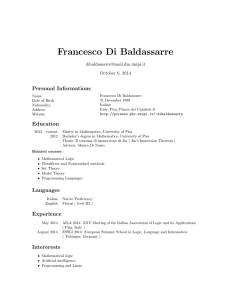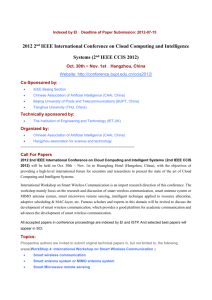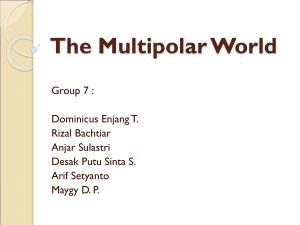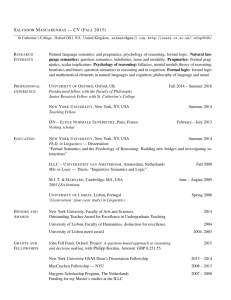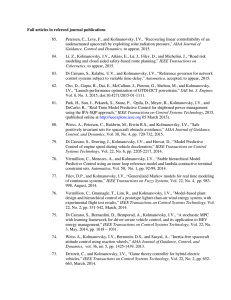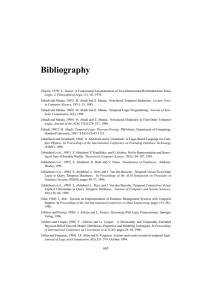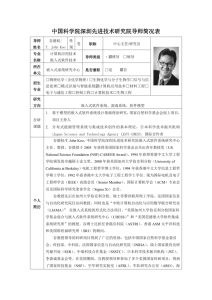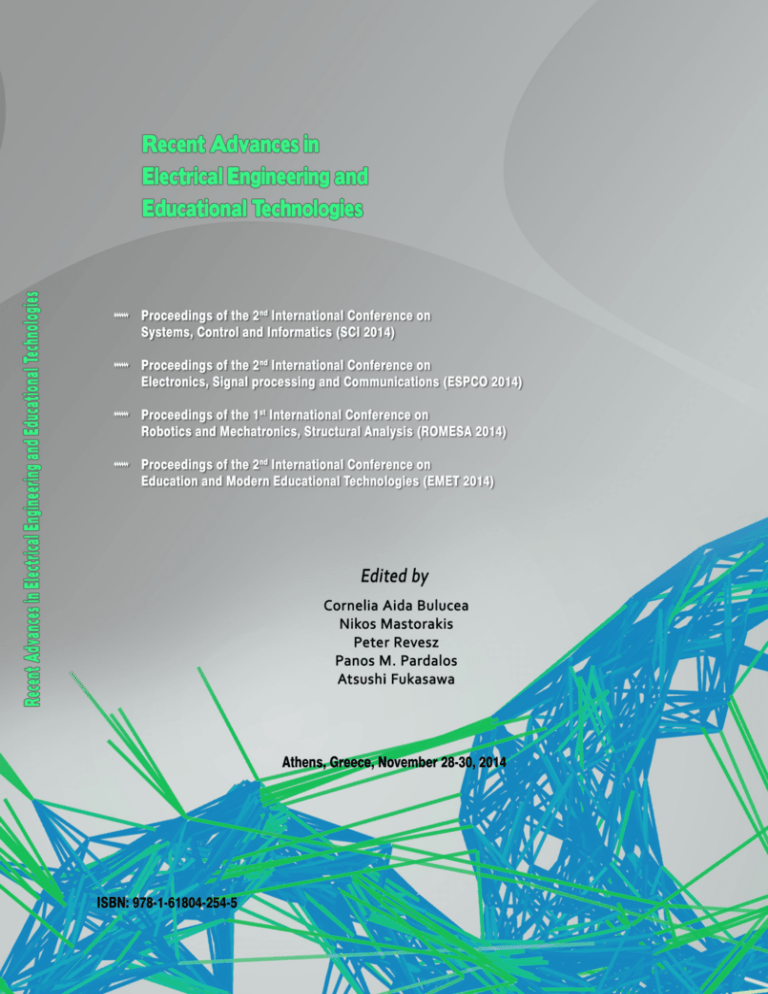
RECENT ADVANCES in ELECTRICAL ENGINEERING and EDUCATIONAL TECHNOLOGIES Proceedings of the 2nd International Conference on Systems, Control and Informatics (SCI 2014) Proceedings of the 2nd International Conference on Electronics, Signal processing and Communications (ESPCO 2014) Proceedings of the 1st International Conference on Robotics and Mechatronics, Structural Analysis (ROMESA 2014) Proceedings of the 2nd International Conference on Education and Modern Educational Technologies (EMET 2014) Athens, Greece November 28‐30, 2014 RECENT ADVANCES in ELECTRICAL ENGINEERING and EDUCATIONAL TECHNOLOGIES Proceedings of the 2nd International Conference on Systems, Control and Informatics (SCI 2014) Proceedings of the 2nd International Conference on Electronics, Signal processing and Communications (ESPCO 2014) Proceedings of the 1st International Conference on Robotics and Mechatronics, Structural Analysis (ROMESA 2014) Proceedings of the 2nd International Conference on Education and Modern Educational Technologies (EMET 2014) Athens, Greece November 28‐30, 2014 Copyright © 2014, by the editors All the copyright of the present book belongs to the editors. All rights reserved. No part of this publication may be reproduced, stored in a retrieval system, or transmitted in any form or by any means, electronic, mechanical, photocopying, recording, or otherwise, without the prior written permission of the editors. All papers of the present volume were peer reviewed by no less than two independent reviewers. Acceptance was granted when both reviewers' recommendations were positive. ISBN: 978‐1‐61804‐254‐5 RECENT ADVANCES in ELECTRICAL ENGINEERING and EDUCATIONAL TECHNOLOGIES Proceedings of the 2nd International Conference on Systems, Control and Informatics (SCI 2014) Proceedings of the 2nd International Conference on Electronics, Signal processing and Communications (ESPCO 2014) Proceedings of the 1st International Conference on Robotics and Mechatronics, Structural Analysis (ROMESA 2014) Proceedings of the 2nd International Conference on Education and Modern Educational Technologies (EMET 2014) Athens, Greece November 28‐30, 2014 Organizing Committee Editors: Professor Cornelia Aida Bulucea, University of Craiova, Romania Professor Nikos Mastorakis, Technical University of Sofia, Sofia, Bulgaria Professor Peter Revesz, University of Nebraska‐Lincoln, USA Professor Panos M. Pardalos, University of Florida, USA Professor Atsushi Fukasawa, Institute of Statistical Mathematics, Japan Program Committee: Prof. Martin Bohner, Missouri University of Science and Technology, Rolla, Missouri, USA Prof. Martin Schechter, University of California, Irvine, USA Prof. Ivan G. Avramidi, New Mexico Tech, Socorro, New Mexico, USA Prof. Michel Chipot, University of Zurich, Zurich, Switzerland Prof. Xiaodong Yan, University of Connecticut, Connecticut USA Prof. Ravi P. Agarwal, Texas A&M University ‐ Kingsville, Kingsville, TX, USA Prof. Yushun Wang, Nanjing Normal university, Nanjing, China Prof. Detlev Buchholz, Universitaet Goettingen, Goettingen, Germany Prof. Patricia J. Y. Wong, Nanyang Technological University, Singapore Prof. Andrei Korobeinikov, Centre de Recerca Matematica, Barcelona, Spain Prof. Jim Zhu, Western Michigan University, Kalamazoo, MI, USA Prof. Ferhan M. Atici, Department of Mathematics, Western Kentucky University, USA Prof. Gerd Teschke, Institute for Computational Mathematics in Science and Technology, Neubrandenburg, Berlin‐Dahlem, Germany Prof. Meirong Zhang, Tsinghua University, Beijing, China Prof. Lucio Boccardo, Universita degli Studi di Roma "La Sapienza", Roma, Italy Prof. Shanhe Wu, Longyan University, Longyan, Fujian, China Prof. Natig M. Atakishiyev, National Autonomous University of Mexico, Mexico Prof. Jianming Zhan, Hubei University for Nationalities, Enshi, Hubei Province, China Prof. Narcisa C. Apreutesei, Technical University of Iasi, Iasi, Romania Prof. Chun‐Gang Zhu, Dalian University of Technology, Dalian, China Prof. Abdelghani Bellouquid, University Cadi Ayyad, Morocco Prof. Jinde Cao, Southeast University/ King Abdulaziz University, China Prof. Josef Diblik, Brno University of Technology, Brno, Czech Republic Prof. Jianqing Chen, Fujian Normal University, Fuzhou, Fujian, China Prof. Naseer Shahzad, King Abdulaziz University, Jeddah, Saudi Arabia Prof. Sining Zheng, Dalian University of Technology, Dalian, China Prof. Leszek Gasinski, Uniwersytet Jagielloński, Krakowie, Poland Prof. Satit Saejung, Khon Kaen University, Muang District, Khon Kaen, Thailand Prof. Juan J. Trujillo, Universidad de La Laguna, La Laguna, Tenerife, Spain Prof. Tiecheng Xia, Department of Mathematics, Shanghai University, China Prof. Stevo Stevic, Mathematical Institute Serbian Academy of Sciences and Arts, Beogrand, Serbia Prof. Lucas Jodar, Universitat Politecnica de Valencia, Valencia, Spain Prof. Noemi Wolanski, Universidad de Buenos Aires, Buenos Aires, Argentina Prof. Zhenya Yan, Chinese Academy of Sciences, Beijing, China Prof. Juan Carlos Cortes Lopez, Universidad Politecnica de Valencia, Spain Prof. Wei‐Shih Du, National Kaohsiung Normal University, Kaohsiung City, Taiwan Prof. Kailash C. Patidar, University of the Western Cape, Cape Town, South Africa Prof. Hossein Jafari, University of Mazandaran, Babolsar, Iran Prof. Abdel‐Maksoud A Soliman, Suez Canal University, Egypt Prof. Janusz Brzdek, Pedagogical University of Cracow, Cracow, Poland Dr. Fasma Diele, Italian National Research Council (C.N.R.), Bari, Italy Additional Reviewers Eleazar Jimenez Serrano Xiang Bai Jose Flores Genqi Xu Konstantin Volkov João Bastos Abelha Antonio Miguel Carriegos Tetsuya Yoshida Bazil Taha Ahmed Moran Wang Yamagishi Hiromitsu Philippe Dondon Manoj K. Jha Frederic Kuznik Minhui Yan Lesley Farmer Zhong‐Jie Han Stavros Ponis Ole Christian Boe Imre Rudas Hessam Ghasemnejad Matthias Buyle Kazuhiko Natori Dmitrijs Serdjuks George Barreto Kei Eguchi James Vance Shinji Osada Francesco Rotondo Valeri Mladenov M. Javed Khan Andrey Dmitriev Angel F. Tenorio Jon Burley Deolinda Rasteiro Sorinel Oprisan Francesco Zirilli Alejandro Fuentes‐Penna Tetsuya Shimamura Masaji Tanaka Takuya Yamano Santoso Wibowo José Carlos Metrôlho Kyushu University, Japan Huazhong University of Science and Technology, China The University of South Dakota, SD, USA Tianjin University, China Kingston University London, UK Instituto Superior de Engenharia do Porto, Portugal Universidade do Minho, Portugal Universidad de Leon, Spain Hokkaido University, Japan Universidad Autonoma de Madrid, Spain Tsinghua University, China Ehime University, Japan Institut polytechnique de Bordeaux, France Morgan State University in Baltimore, USA National Institute of Applied Sciences, Lyon, France Shanghai Maritime University, China California State University Long Beach, CA, USA Tianjin University, China National Technical University of Athens, Greece Norwegian Military Academy, Norway Obuda University, Budapest, Hungary Kingston University London, UK Artesis Hogeschool Antwerpen, Belgium Toho University, Japan Riga Technical University, Latvia Pontificia Universidad Javeriana, Colombia Fukuoka Institute of Technology, Japan The University of Virginia's College at Wise, VA, USA Gifu University School of Medicine, Japan Polytechnic of Bari University, Italy Technical University of Sofia, Bulgaria Tuskegee University, AL, USA Russian Academy of Sciences, Russia Universidad Pablo de Olavide, Spain Michigan State University, MI, USA Coimbra Institute of Engineering, Portugal College of Charleston, CA, USA Sapienza Universita di Roma, Italy Universidad Autónoma del Estado de Hidalgo, Mexico Saitama University, Japan Okayama University of Science, Japan Kanagawa University, Japan CQ University, Australia Instituto Politecnico de Castelo Branco, Portugal Table of Contents Plenary Lecture 1: Application of Paraconsistent Annotated Logic Program EVALPSN to Intelligent Control/Safety Verification Kazumi Nakamatsu Paraconsistent Annotated Logic Program and Its Application to Intelligent Control Systems Kazumi Nakamatsu, Jair M. Abe, Seiki Akama How to Improve Positional Accuracy in Redundant Omnidirectional Mobile Robots? Yaser Maddahi, S. M. Hosseini Monsef, Nikos E. Mastorakis MEMS Microrobot System with Locomotion Rhythm Generator Using Artificial Neural Networks Ken Saito, Minami Takato, Yoshifumi Sekine, Fumio Uchikoba Using Multimodality and Expressive Avatars in e‐Government Interfaces to Increase Usability D. Rigas, B. Almutairi Development of a Human Movement Monitoring System Based on Wearable Devices Xiaochen Zheng, Joaquín Ordieres‐Meré e‐Psychology in Research Level Using Asynchronous e‐Learning Platform in Military Environment Nikolaos V. Karadimas, Vassia Karamanoli Automatic Learning Path Design: Development and Implementation Agostino Marengo, Alessandro Pagano, Giulio Monopoli High Dynamic Range Video Eye Tracking Dataset Yuanyuan Dong, Eleni Nasiopoulos, Mahsa T. Pourazad, Panos Nasiopoulos The Analysis of the Physiological Similarities Human Hana Talandová, Lukáš Králík, Milan Adámek The Role of Expressive Full‐Body Avatars and Earcons and Auditory Icons in e‐Assessment Interfaces D. Rigas, A. Algahtani Collaborative Decisions within Business Intelligence Context: A GDSS Prototype George A. Rigopoulos, Nikolaos V. Karadimas Proposal of Model for Security Management Integrated System Lukas Kralik, Roman Senkerik 11
13
22
27
33
39
45
51
56
60
63
70
77
Computer Based BIA Method in Preschool Education Dragan Martinović, Mirko Dejić, Danimir Mandić, Vladan Pelemiš, Momčilo Pelemiš, Darijan Ujsasi A Study on Ontologies and Their Classification Thabet Slimani Malaysia Dengue Detection Model Using Frequent Outlier Zalizah Awang Long Connection Management System Based on MIH and MIP over NS‐3 Juan C. Chaparro‐Marroquín, Roberto Bustamante‐Miller Introducing Social Awareness to Next Generation Wireless Networks Pavlos Kosmides, Konstantinos Demestichas, Angelos Rouskas, Evgenia Adamopoulou, Miltiades Anagnostou Voice Processing for Sobriety Test: Its Scope and Application Myung‐Sook Kim, Myung‐Jin Bae Speaker Recognition System Based on AR‐MFCC and SAD Algorithm with Prior SNR Estimation and Adaptive Threshold over AWGN channel Riadh Ajgou, Salim Sbaa, Said Ghendir, Ali Chamsa, A. Taleb‐Ahmed Towards an Amazigh UNL Dictionary I. Taghbalout, F. Ataa Allah, M. Elmarraki Optimization of Web Technologies for Mobile Devices M. Krbeček, V. Veselá Tic Information Services through Process Management and Massive Professional Communities Fernando Prieto Bustamante, Yaneth P. Caviativa, Yoan Manuel Guzman, Victor Manuel Castro Rodríguez Cyber Physics System on Railway Traffic Lan Dong, Dongyan Zhang Informatics Teaching Methodology in Improving Informatics Students’ Competencies Danimir Mandic, Gordana Jotanovic, Goran Jausevac, Ljubisa Vladusic, Aleksandra Mandic Rule‐Based Recommendation for Supporting Student Learning‐Pathway Selection Abdelrahman Osman Elfaki, Khaled M. Alhawiti, Yahya M. AlMurtadha, Osman Ahmed Abdalla, Asim Abdallah Elshiekh Twenty Years of Informatics Teaching Methods in Slovakia Ivan Brodenec 81
86
93
102
112
116
120
129
133
138
144
148
155
161
Comparative Analysis of Web Animation Creation Methods V. Veselá, M. Krbeček, Z. Prokopová Handel‐C Implementation on FPGA of Real Time Motion Detection K. Sehairi, C. Benbouchama, F. Chouireb Remote Control of a Positioning System Florin Ravigan, Niculae Boteanu, Laurentiu Alboteanu, Eugen Gheorghe Subţirelu Approach Based on Multi‐Agent Systems and Ontologies for Interoperability Between Different Systems of Port Information Mehdi Abid, Benayad Nsiri, Yassine Serhane Microembolus Classification Using MFCC and LPC Feature Extractions Najah Ghazali, Haryati Jaafar, Dzati Athiar Ramli Selection of Artificial Data of Minority for Better Data Mining Hyontai Sug, Douglas D. Dankel II A Study of the Software Development Using Agile Divya Prakash Shrivastava Half‐Bridge Converter Based VAr Compensation of Single‐Phase R‐L Load K. Subramanian, M. Kowsalya Pervasive Universal Gateway for Medical Devices Sérgio Oliveira, Carlos Filipe Portela, Manuel Filipe Santos Investigating the Relationship between Social Media Usage and Students’ Grades in Saudi Arabia: A Mixed Method Approach Basit Shahzad, Esam Alwagait, Sophia Alim A Human‐Machine Interaction System for the Recognition and Synthesis of Arabic Digits Tebbi Hanane, Hamadouche Maamar, Azzoune Hamid Standardization of Electronic Health Record EHR Interoperability Unified of Colombian Health Care Fernando Prieto Bustamante, Yaneth P. Caviativa, Yoan Manuel Guzman, Victor Manuel Castro Rodríguez Human Identification Based on Ear Recognition S. Gangaram, S. Viriri Medical Image Compression by Region of Interest Based on SPIHT and Global Thresholding Using Huffman Coding A. Seddiki, D. Guerchi 165
169
175
180
185
191
195
199
205
211
215
222
230
235
Authors Index 239
Plenary Lecture 1 Application of Paraconsistent Annotated Logic Program EVALPSN to Intelligent Control/Safety Verification Prof. Kazumi Nakamatsu School of Human Science and Environment University of Hyogo JAPAN E‐mail: nakamatu@shse.u‐hyogo.ac.jp Abstract: Paraconsistent logic is well known as a formal logic that can deal with contradiction in the framework of logical system consistently. One of paraconsistent logics called annotated logic has been proposed by Prof. Newton da Costa, and its logic program has also been proposed by Prof. V.S. Subrahmanian et al. later as a tool of dealing with knowledge bases. Some paraconsistent annotated logic programs with strong negation have been developed for dealing with non‐monotonic reasoning such as default reasoning, defeasible reasoning, defeasible deontic reasoning, plausible reasoning, etc. by Kazumi Nakamatsu. Recently He has proposed a paraconsistent annotated logic program called Extended Vector Annotated Logic Program with Strong Negation (EVALPSN), which can deal with conflict resolving, defensible deontic reasoning, plausible reasoning, etc. The EVALPSN reasoning function has been applied to various intelligent controls and safety verification systems such as pipeline valve control, traffic signal control, railway interlocking safety verification, etc. In this lecture, some of these applications of EVALPSN with some simulation systems will be introduced. Moreover, a special EVALPSN that can deal with before‐after relations between processes (time intervals), which has been named bf(before‐after) ‐EVALPSN has been developed. It has been shown that bf‐EVALPSN can be applied to real‐time process order control. It will also be introduced how to apply bf‐EVALPSN to intelligent real‐time process order control and safety verification with examples. Brief Biography of the Speaker: Kazumi Nakamatsu received the Ms. Eng. and Dr. Sci. from Shizuoka University and Kyushu University, Japan, respectively. He is a full Professor at School of Human Science and Environment, University of Hyogo, Japan. His research interests encompass various kinds of logic and their applications to Computer Science, especially paraconsistent annotated logic programs and their applications. He has developed some paraconsistent annotated logic programs called ALPSN(Annotated Logic Program with Strong Negation), VALPSN(Vector ALPSN), EVALPSN(Extended VALPSN) and bf‐
EVALPSN (before‐after EVALPSN) recently, and applied them to various intelligent systems such as a safety verification based railway interlocking control system and process order control. He is an author of over 150 papers and book chapters, and edited 7 books published by prominent publishers. Kazumi Nakamatsu has chaired various international conferences, workshops and invited sessions, and he has been a member of numerous international program committees of workshops and conferences in the area of Artificial Intelligence and Computer Science. He serves as Editor‐in‐Chief of the International Journal of Reasoning‐based Intelligent Systems by Inderscience Publishers(UK) and an editorial board member of many international journals. He has contributed numerous invited lectures at international workshops, conferences, and academic organizations. He also is a recipient of some conference and paper awards. He is a member of Japan AI Society, IEEE, etc.

